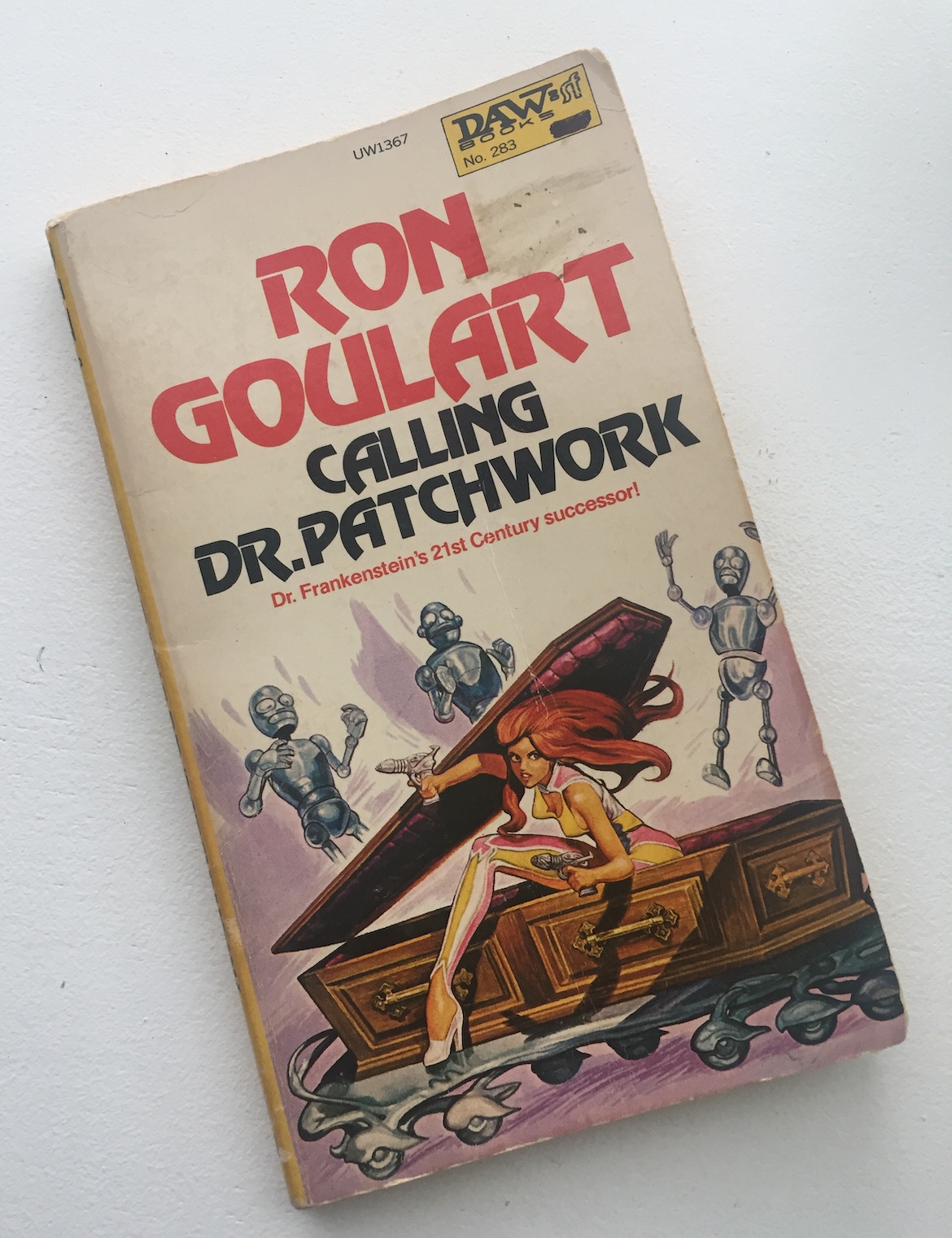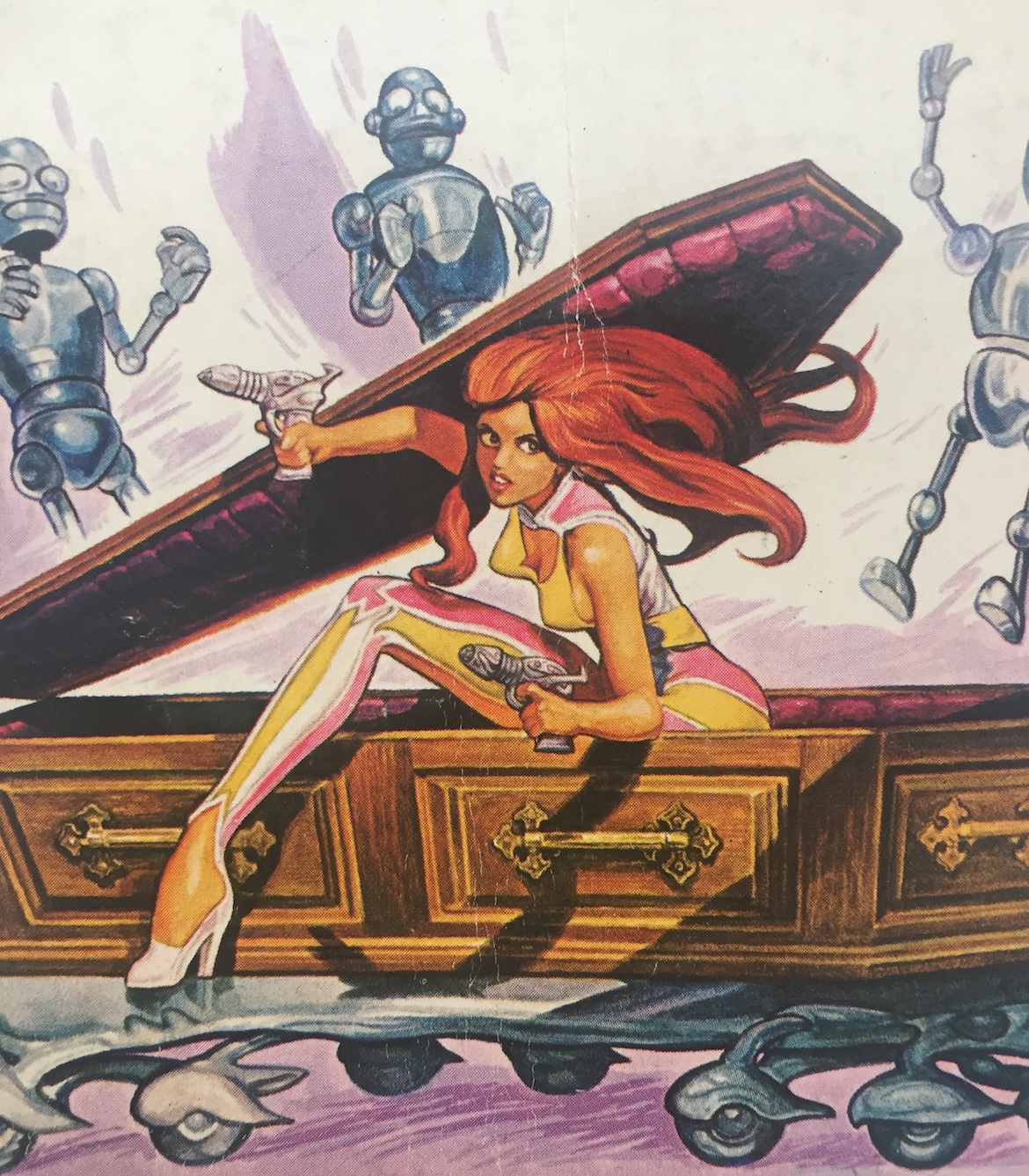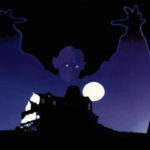
Calling Dr. Patchwork Takes the Frankenstein Motif In A Comical New Direction
“Kill yr idols!” Sonic Youth’s 1980s branding burns like a time machine that resides as an indirect reference to Ron Goulart’s vision of Odd Jobs, Inc. But for the pop cultural historian, he took this premature idea into 1978 science fiction ideology and created a master Frankenstein-like villain, Dr. Patchwork. The philosophical premise of idolatry and celebrity is turned upside down.
What Goulart did is take an overdone Frankenstein motif and churn new and refreshing life out of the god-like concept of pop culture by developing a story about a country singer built out of pieces of other dead celebrities. Sounds like a concept William Gibson would build on. This murder mystery is where Odd Jobs Inc. originates. A sort of swinging ‘60s-meets-Mystery Incorporated tag team, the story takes you on a ride while stuffing in juvenile humor.
In the midst of the book’s core lies a fractured America with factions battling for political power. All of this just adds to the chaos within the rollercoaster ride that is Calling Dr. Patchwork.
The book would have made more sense on the level of a Laser Books published novel but DAW picked it up for release in 1978. This light-hearted animated detective duo (a husband and wife) could have been a mental break from Goulart’s previous experience writing scripts of classic science fiction for Marvel Comics and also working on the newspaper serial, Star Hawks.
The book is no more than a fun ride filled with wacky adventure, cartoonish mystery, and a gaggle of androids thrown in for the futuristic effect. Not as influential as Robert Aspirin breathing life into the Myth Adventures the same year, yet the two stories do pair together in the same science fiction/fantasy dimension.
Odd Jobs, Inc. did not have as lasting of an impression as Aspirin’s fantastical group. And for Calling Dr. Patchwork, a futuristic Steed and Peel, or better yet, a Mcmillan and Wife team-up gives it a prime-time element. Even the sex and violence is more Marx brothers in descriptives and less effective. Today, we are bombarded by postmodern dystopian stories and doomsday science fiction fetishes, Goulart’s work is a welcome relief of fun in fiction.




No Comment! Be the first one.